The 2025 Gift Guide
Over 500 box sets, books, and LPs are on sale now at ArkivMusic!
Discover the perfect gift for the classical music aficionado in your life with The 2025 Gift Guide, including the latest box sets from renowned labels such as Pentatone and Brilliant Classics, vinyl releases featuring artists such as acclaimed violinist Chloe Chua and pianist Jeroen van Veen, children's books like My First Classical Music Book, sheet music, and more!
Start shopping The 2025 Gift Guide now — and don't forget to check out The 2025 Holiday Collection and the 2025 Best Sellers sale!
Sale ends 9:00am ET, Monday, January 5th, 2026.
543 products
-

-

-
 {# optional: put hover video/second image here positioned absolute; inset:0 #}
On SaleNaxos
{# optional: put hover video/second image here positioned absolute; inset:0 #}
On SaleNaxosHasse: Didone Abbandonata / Hofstetter, Hofkapelle Munchen
One of the outstanding composers of his day, Johann Adolph Hasse was seen as possessing "the same qualities of true genius, taste...
February 26, 2013$35.99$17.99 -
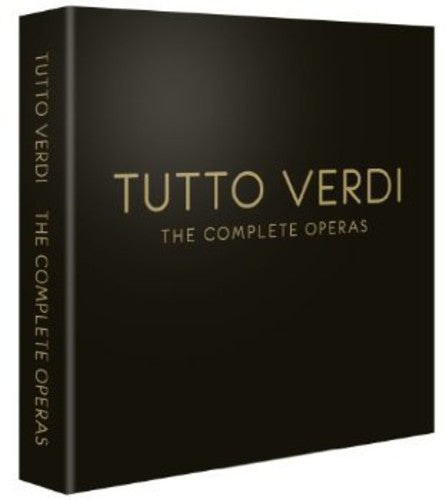
-

-
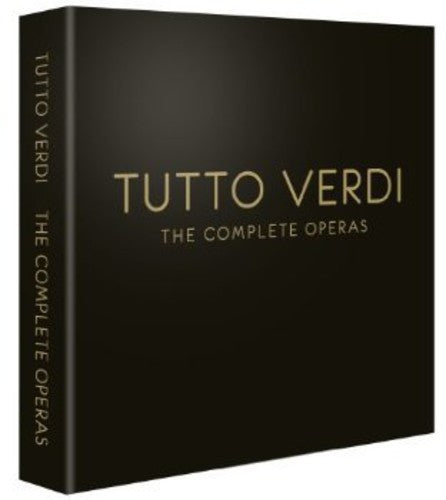 {# optional: put hover video/second image here positioned absolute; inset:0 #}
On SaleC Major Entertainment
{# optional: put hover video/second image here positioned absolute; inset:0 #}
On SaleC Major EntertainmentTutto Verdi - The Complete Operas
Also available on Blu-ray On the occasion of the 200th birthday of Giuseppe Verdi, the Teatro Regio di Parma and Unitel ClassiCa...
December 18, 2012$605.99$302.84 -

-

-
 {# optional: put hover video/second image here positioned absolute; inset:0 #}
On SaleOpus Arte
{# optional: put hover video/second image here positioned absolute; inset:0 #}
On SaleOpus ArteBallet for Children / The Royal Ballet
Joby Talbot ALICE’S ADVENTURES IN WONDERLAND Ballet in 2 Acts Alice – Lauren Cuthbertson Jack / Knave of Hearts – Sergei Polunin...
November 13, 2012$64.99$45.99 -

-

-
 {# optional: put hover video/second image here positioned absolute; inset:0 #}
On SaleRicercar
{# optional: put hover video/second image here positioned absolute; inset:0 #}
On SaleRicercarA Baroque Christmas
The celebration of the Nativity has always been a source of inspiration for composers. The different elements of the evangelical narrative evoke...
November 13, 2012$40.99$30.99 -

-

-
 {# optional: put hover video/second image here positioned absolute; inset:0 #}
On SaleCapriccio
{# optional: put hover video/second image here positioned absolute; inset:0 #}
On SaleCapriccioVivaldi, Scarlatti, Caldara: Cantatas / Ose, Cencic, Ornamente 99
Max Emanuel Cencic has become one of the best countertenors of his time. Cencic is a former member of the Vienna Boys’...
November 13, 2012$27.99$20.99 -

-

-
 {# optional: put hover video/second image here positioned absolute; inset:0 #}
On SaleMusic and Arts Programs of America
{# optional: put hover video/second image here positioned absolute; inset:0 #}
On SaleMusic and Arts Programs of AmericaSzymon Goldberg Vol 2 - Commercial Recordings 1932-1951
Recordings were made of Szymon Goldberg (1909-1993) over virtually a 60-year period. It must have been one of the longest studio careers...
October 30, 2012$96.99$72.99 -

-

-
 {# optional: put hover video/second image here positioned absolute; inset:0 #}
On SaleNaxos
{# optional: put hover video/second image here positioned absolute; inset:0 #}
On SaleNaxosThe American Spirit: Roots and Transformations
These four Naxos American Classics releases selected for this Americana collection... focus on some of the defining moments of that history. First......
October 30, 2012$53.99$37.99 -

-

-
 {# optional: put hover video/second image here positioned absolute; inset:0 #}
On SaleSWR
{# optional: put hover video/second image here positioned absolute; inset:0 #}
On SaleSWRCarl Schuricht Collection II
This album features many extraordinary performances of 19th Century repertoire, but it also provides a glimpse of Schuricht's advocacy of 20th century...
October 30, 2012$93.99$46.97 -
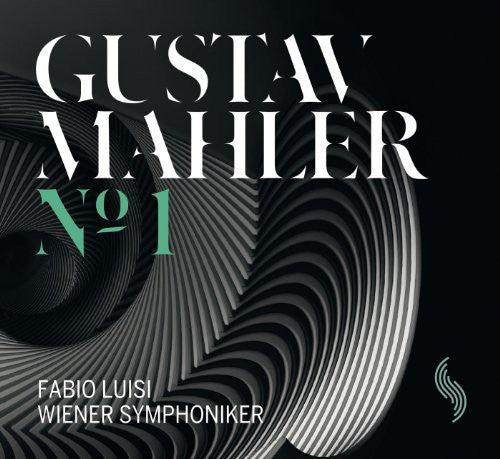
-
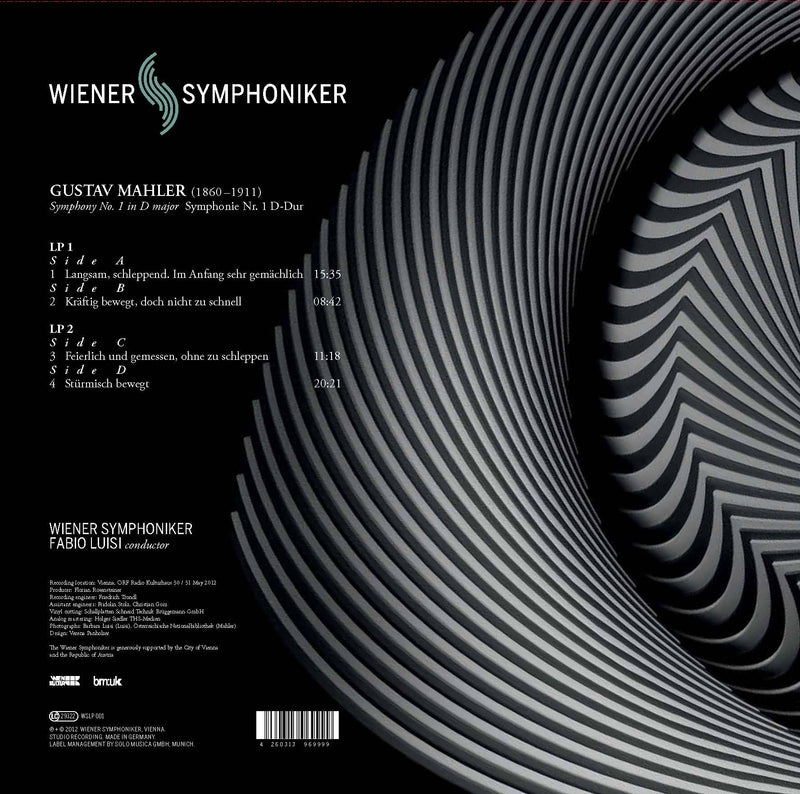
-
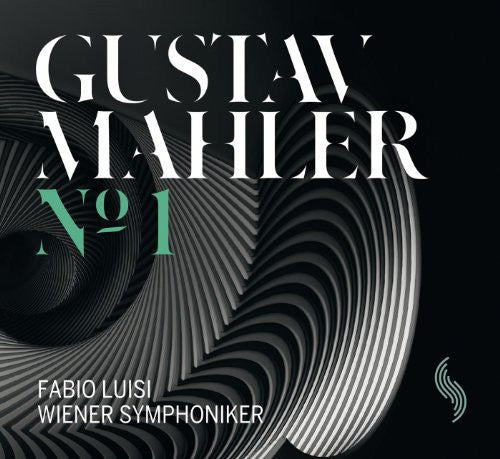 {# optional: put hover video/second image here positioned absolute; inset:0 #}
On SaleWiener Symphoniker
{# optional: put hover video/second image here positioned absolute; inset:0 #}
On SaleWiener SymphonikerMAHLER SYMPHONY NO. 1
A paradigmatic example of the Wiener Symphoniker's core repertoire, Mahler's First Symphony in D major was written only four years before the...
October 30, 2012$64.99$32.48 -

-

-
 {# optional: put hover video/second image here positioned absolute; inset:0 #}
On SaleOehms Classics
{# optional: put hover video/second image here positioned absolute; inset:0 #}
On SaleOehms ClassicsWagner: Götterdämmerung / Ryan, Kranzle, Bullock, Weigle, Oper Frankfurt
"Completed in Wahnfried on November 21, 1874. I say nothing further!!” With these words written at the bottom of his Götterdämmerung score,...
September 25, 2012$47.99$23.98 -
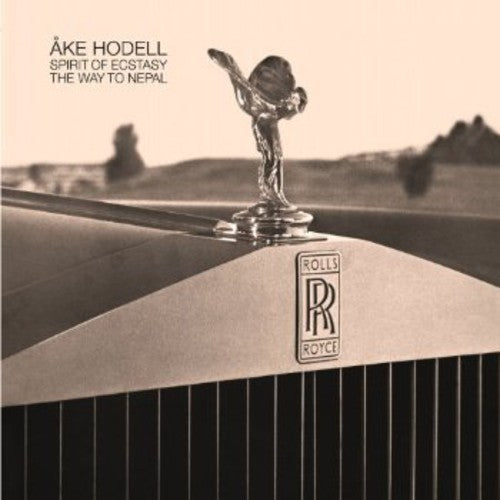
-
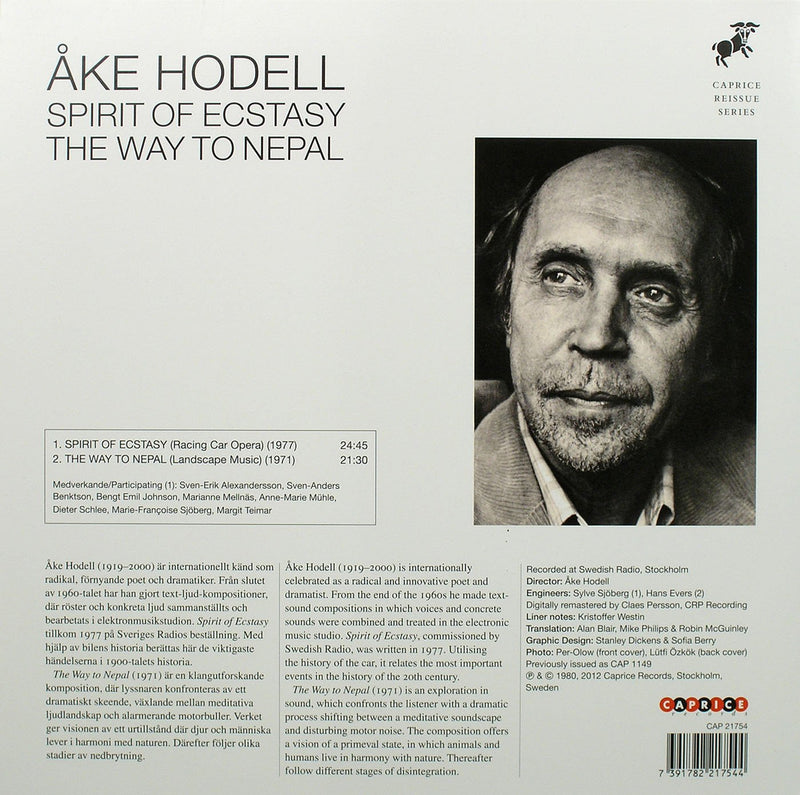
-
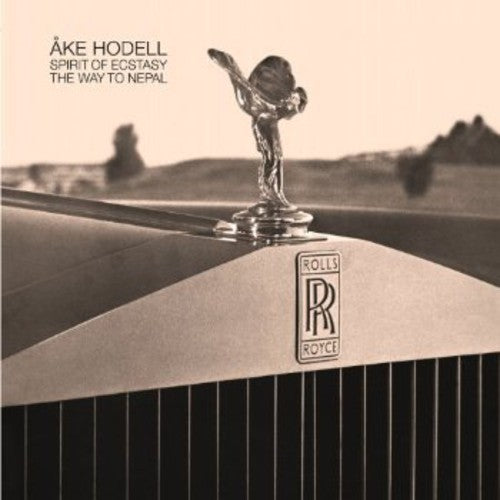 {# optional: put hover video/second image here positioned absolute; inset:0 #}
On SaleCaprice
{# optional: put hover video/second image here positioned absolute; inset:0 #}
On SaleCapriceÅke Hodell ?– Spirit Of Ecstasy / The Way To Nepal
Spirit of Ecstasy has been out-of-print for more than two decades which makes this reissue highly important. The album consists of the...
September 25, 2012$18.99$14.99 -
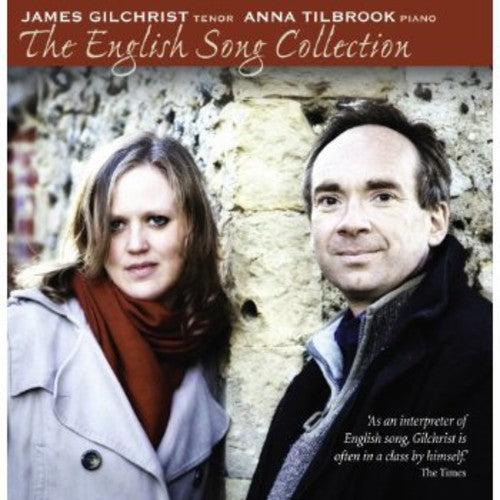
-

-
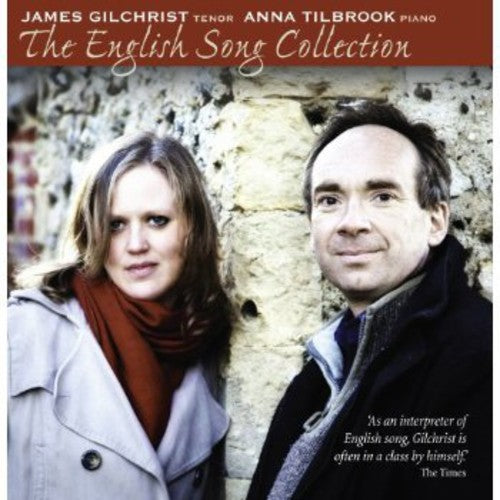 {# optional: put hover video/second image here positioned absolute; inset:0 #}
On SaleLinn Records
{# optional: put hover video/second image here positioned absolute; inset:0 #}
On SaleLinn RecordsENGLISH SONG COLLECTION
In-demand tenor James Gilchrist has been hailed as an unparalleled interpreter of English song. In this special three-disc set are gathered his...
September 25, 2012$40.99$30.99 -
 {# optional: put hover video/second image here positioned absolute; inset:0 #}
On SaleNaxos
{# optional: put hover video/second image here positioned absolute; inset:0 #}
On SaleNaxosSTORY OF NAXOS
In 1987, a budget classical record label was started in Hong Kong by Klaus Heymann, a German businessman who loved classical music....
September 01, 2012$32.99$16.49 -
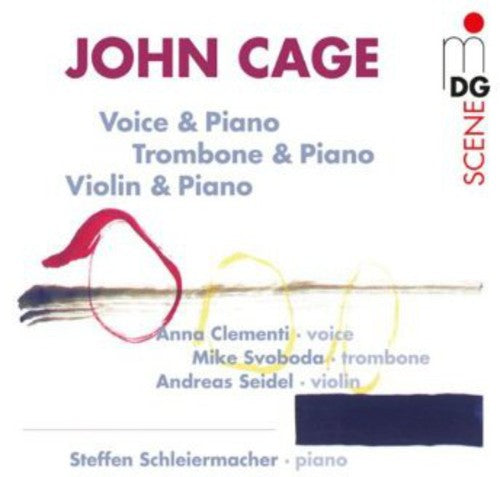 {# optional: put hover video/second image here positioned absolute; inset:0 #}
On Sale
{# optional: put hover video/second image here positioned absolute; inset:0 #}
On Sale -
{# optional: put hover video/second image here positioned absolute; inset:0 #}On Sale
Hasse: Didone Abbandonata / Hofstetter, Hofkapelle Munchen
One of the outstanding composers of his day, Johann Adolph Hasse was seen as possessing "the same qualities of true genius, taste and judgment" as his librettist Pietro Metastasio. Didone abbandonata represents the once hugely popular 18th century genre of opera seria, exploring the same tragic story as Purcell's earlier Dido and Aeneas while expanding the heroine's conflicts between regal duties, love, and helplessness in the face of desertion.
Tutto Verdi - The Complete Operas
On the occasion of the 200th birthday of Giuseppe Verdi, the Teatro Regio di Parma and Unitel ClassiCa have joined forces to realize a truly unique project. Up to the Verdi anniversary year 2013, all of the composer’s 26 operas, as well as the Requiem – which is closely related to the operas – will be performed and audiovisually recorded in and around Parma. For the first time ever, and on time for the composer’s anniversary, Verdi’s operatic oeuvre, which comprises the labor of more than 50 years, will be available in high definition and surround sound.
Giuseppe Verdi was born in the little village of Le Roncole in the vicinity of Parma and – even though he celebrated his greatest triumphs in Milan, Venice, Naples, and other cities – spent the longest period of his life in seclusion close to Parma, until his death in Milan in 1901. Today, the region of Parma honors its one-time fellow citizen with the internationally acclaimed Verdi Festival organized by the Teatro Regio di Parma. Every year, Verdi’s masterworks are performed in the historical theaters of Parma and neighboring Busseto over 28 days in the fall. Raising these productions to the level of highly coveted events is the participation of world stars of bel canto such as Leo Nucci, Marcelo Álvarez, Renato Bruson, and Daniela Dessì, and conductors such as Yuri Temirkanov and Gianluigi Gelmetti.
The Teatro Regio was opened during Verdi’s lifetime, in 1829, as the Nuovo Teatro Ducale. It is regarded as one of the most important theaters in italy. Its audiences, in particular, enjoy a very special reputation for being one of the most critical in the world. Many singers report about the fears that gripped them while on the stage, and others about moments of bliss when they were acclaimed there. It is said that tenors who fail on the stage of the Regio are punished even by the porters of the hotels, who refuse to carry their luggage.
A production of Unitel in cooperation with Fondazione Teatro Regio di Parma.
---------
“The Tutto Verdi series, in its goal of being complete, makes it possible to not only hear but see performances of works one seldom encounters outside of Parma, such as Oberto; Alzira (in a 2012 concert version in Dobbiaco); Attila; I Masnadieri (in a performance from the Teatro San Carlo in Naples); Il Corsaro; and La Battaglia di Legnano.
One does not have to be a Verdi completist like me to find a lot to enjoy in Tutto Verdi. The rarities are worth knowing to expand your sense of the composer’s output. The seven operas with Nucci are fascinating on so many levels, not the least of which is that his younger colleagues respond to his work not by being in awe but by allowing themselves to dig deeper and bring their performances to a higher plain than they imagined they were capable of. What would Peppino say?” – Fred Plotkin, WQXR
Review of blu-ray version:
VERDI TUTTO VERDI - The Complete Operas • Various performers • C MAJOR 721904 (27 Blu-ray discs: 64:47:00)
To mark the bicentenary of the birth of Giuseppe Verdi—indisputably (with absolutely no apologies to champions of Richard Wagner) the greatest opera composer in history—C Major/Unitel Classics has issued this set of the complete operas of Verdi, plus the Manzoni Requiem, in a single set of 27 Blu-ray discs. Between this and the 75-CD set on Decca of the complete works of Verdi issued earlier this year, lovers of the Italian maestro now have two impressive, if decidedly flawed (in both cases), cornucopias of musical riches available to them.
First, the logistics. This set (the deluxe edition—there is a less expensive one, with the DVDs in standard plastic cases and no book) comes in an LP-sized heavy white cardboard outer slipcase, which holds an inner black-colored heavy cardboard album. The inner album holds the Blu-ray discs in cut-out slots in heavy cardboard pages, with four discs per page; each slot thoughtfully has a finger-hole cut at the top of it to make it easy to remove the discs with minimal risk of ripping the cardboard. On the back sides of those pages are printed the titles, casts, and small color shots of the four operas on the next facing cardboard page. The album also has a separate pocket that contains a 120-page book (also LP-sized), printed on heavy glossy paper. The book opens with an introduction by renowned Verdi scholar Philip Gossett of the University of Chicago, who is overseeing the monumental project of creating and editing the complete critical edition of Verdi’s operas, and an essay, “The Verdi Myth,” by the distinguished British musicologist of 19th-century opera, Roger Parker. After that follow four-page listings for each opera, all having the same format: a large photo from the live production; logistical information (the title and librettist of the opera, conductor, cast members and corresponding characters, chorus and orchestra, and date and location for that production); a table of contents for the disc, with track titles and their individual timings; and a brief plot synopsis. The introduction, essay, plot synopses, and names of the characters are provided in English, French, German, and Italian. The final two pages of the book provide, in minuscule type, a plethora of background technical information and credits, even down to the various computer programs used to prepare the subtitles in various languages. The layout is generally excellent; I only wish that it also contained the complete timings for each opera and an index of the performers. There is one notable typographical error: an entry for the conductor (Yuri Temirkanov) is missing from the cast list for the Requiem.
As for the discs themselves, each opera comes with an introduction, always lasting about 10:40, that sets the opera in its historical context and provides a synopsis of the plot accompanied by snippets from the performance. Each introduction concludes with rankings of how frequently that particular opera is performed with respect to both Verdi’s other operas and the operatic repertoire as a whole. Absolutely no information is provided as to how these figures were derived (e.g., how many opera houses were surveyed, and for how long a time period), and so they strike me as decidedly suspect. Also, while the introductions are generally quite good, the narrator has a few distracting ticks; e.g., “Desdemona” is given the English pronunciation of the Shakespeare character rather than the Italian one of Verdi’s heroine, and “recitative” is oddly sounded out as “re-cite-tah-teeve” instead of “reh-chih-tah-teeve.” There are also trailers advertising several other operas in the series. Subtitles are available in English, French, German, Spanish, Chinese, Japanese, and Korean. For audio settings, there is a choice between PCM Stereo and DTS-HD Master Audio 5.1. Quite oddly, while successive discs in the set carry catalog numbers that incrementally increase by 200 (720104, 720304, etc.), this complete set is assigned a catalog number that places it between Attila and Macbeth , rather than at the beginning or end of the entire series.
Now, for the performances themselves. My discussions of the merits and demerits of each performance will (with a couple of exceptions) be relatively brief, for two reasons. First, this review must be kept within manageable bounds of length for this magazine. Second, virtually all of the discs have been released separately, with more lengthy individual reviews of those having already appeared in Fanfare at the hands of my colleagues (mostly Bill White, who reviewed 22 out of 27 items). I will cite these in the course of my own discussions, opening each individual review with a reference to the specific critic and the issue in which his review appeared. In citing alternative recordings, I will confine myself to other alternatives on DVD except in cases where those are unsatisfactory or a greatly superior version exists on CD.
By way of prologue, some comments that apply to all or most of the productions in this set. In his introduction, Gossett notes: “Parma has a reputation as one of the most conservative opera houses in Italy, so by and large the operas are seen in a fashion the composer himself would have recognized.” That is true only up to a point. It is true more of the costumes than of the sets, with many of the latter being far more abstract or spartan than typically would have been the norm even in smaller regional opera houses of Verdi’s time. Thankfully, there are only three major and typically repellant invasions of Regietheater into the proceedings (in Macbeth, I masnadieri, and La forza ). I will only remark upon the sets and costumes in particularly noteworthy instances.
As for the music, several of the performances utilize the recent new critical editions of Verdi’s scores from the project headed by Gossett. (So far, 13 volumes out of a projected 33, plus the Requiem , have been issued over the last 20 years, with four more currently in preparation; see humanities.uchicago.edu/orgs/ciao/Introductory/Vavail.html#operas.) That does not guarantee an uncut performance, however; cabalettas are often truncated, and in I vespri siciliani the entire ballet in act 3 is omitted. One can only term this a major opportunity missed.
Furthermore, the claim that this set embraces the “complete” operas of Verdi is an outright misstatement. The most significant omissions are Jérusalem , Verdi’s 1847 French adaptation of I Lombardi from 1843, and Aroldo , his radical reworking in 1857 of Stiffelio from 1850. Both contain enough new music (in the case of Aroldo , an entirely new last act) that they constitute entirely separate works from their progenitors. To that I would also add the original 1857 version of Simon Boccanegra , which in addition to the new act 2 Council Scene had much of its score drastically rewritten. To my mind, the absence of these three items belies the claim of any Verdi opera series that claims to be complete. Of lesser import are the omissions of the original 1847 version of Macbeth and original 1862 version of La forza del destino , and the original French versions of Les vêpres siciliennes and Don Carlos that are presented here as I vespri siciliani and Don Carlo . (There are also the exceedingly vexed textual issues surrounding the numerous different versions of Don Carlos/Don Carlo; the performance offered here is the five-act Italian version of the Fontainbleau scene added to the four-act Italian revision of 1884.) If one wanted to be pedantic, one could also cite the omissions of the original Italian adaptation of Les vêpres siciliennes as Giovanna di Guzman, and of the later French adaptations of Il trovatore as Le trouvère and of La forza del destino as La force du destin.
Regarding the performances, with two exceptions ( I masnadieri from the San Carlo Opera in Naples and Otello from the Salzburg Festival), all of these derive from provincial Italian opera houses, and not the major theaters in Venice, Milan, Rome, or Naples. In fact, all but five— Alzira, I masnadieri, La battaglia di Legnano, Don Carlo, and Otello —are staged in Parma, Verdi’s home city. Of the Parma presentations, two ( Oberto and Attila ) are staged at the smaller opera house in the suburb of Busseto, with the Requiem being performed at the Teatro Farnese and all the others being given in the city’s main theater, the Teatro Regio. One opera, Alzira , is (regrettably) given in a concert performance instead of a staged production.
Not surprisingly, given their provincial provenance, the performances vary widely in quality from quite good to excruciatingly awful. With a few exceptions, the vocal casts variously consist of young singers working their way up the operatic career ladder, over-the-hill veterans on their way back down the same, and “house” singers whose careers are established primarily at that theater. Since most of the productions are staged in Parma, several “house” singers appear for good or ill in multiple productions. Likewise, with occasional exceptions the conductors are not figures of international stature, though most prove themselves to be quite capable. Unless otherwise stated, assume in all of the reviews below that the conductor leads his forces competently, and that the orchestra and chorus perform creditably, albeit at the level of skill one would expect from a regional theater rather than world-class ensembles. Finally, while I did not have the regular DVD versions available for comparison, I can say that these feature the razor-sharp resolution of detail common to modern Blu-ray issues and fine recorded sound.
VERDI Oberto • Antonello Allemandi, cond; Francesca Sassu ( Leonora ); Mariana Pentcheva ( Cuniza ); Fabio Sartori ( Riccardo ); Giovanni Battista Parodi ( Oberto ); Parma Royal Theater Ch & O • C MAJOR 720104 (Blu-ray: 2:04:39) Live: Busseto 10/16 & 23/2007
(Bill White 36:4) With few exceptions, I almost always find myself in agreement with Bill White on the merits and demerits of various opera recordings, and I have little to add here to his excellent review. We are largely in accord on the overall fine cast of singers, with top honors going to soprano Sassu and tenor Sartori. I find Parodi somewhat rough-hewn in style but effective, and have reservations about Pentcheva, who has a rather squally top with an unattractive spread in the vibrato, though (unlike her other performances in this set) her lower and middle registers are solid here. I would add that conductor Allemandi gives an excellent account of the score, which is far better and more interesting than its unwarranted poor reputation suggests. Unlike White, I did not find anything particularly distracting about the characters’ gestures or the use of a discrete tableau for each scene. If vocally not on the level of the two main studio recordings on CD—the 1992 Orfeo set with Ghena Dimitrova, R?ža Baldani, Carlo Bergonzi, and Rolando Panerai under Lamberto Gardelli, and the 1996 Decca version with Maria Guleghina, Violeta Urmana, Stuart Neill, and Samuel Ramey under Neville Marriner—it is quite enjoyable and much better than its only DVD rival, a 2007 Opus Arte issue with Evelyn Herlitzius, Marianne Cornetti, Carlo Ventre, and Ildar Abdrazakov under Yves Abel.
VERDI Un giorno di regno • Donato Renzetti, cond; Anna Caterina Antonacci ( Marchesa del Poggio ); Alessandra Marianelli ( Giuletta ); Guido Loconsolo ( Belfiore ); Ivan Magri ( Edoardo ); Andrea Porta ( Kelbar ); Paolo Bordogna ( La Rocca ); Parma Royal Theater Ch & O • C MAJOR 720304 (Blu-ray: 1:59:37) Live: Parma 1/31/2010
(Bill White 36:4) White placed this on his 2013 Want List. While I had a different choice from this series for mine (see Stiffelio below), I can well understand his enthusiasm, even if I don’t quite share it to the same degree. Again, I am mostly in agreement with his comments up and down the line, but with a few more reservations. Antonacci now has a slight beat in the top of her register, and Loconsolo is shy of a few top notes. On the other hand, tenor Ivan Magri is terrific, a world-class singer who ought to be gracing the stages of the Met, La Scala, and Covent Garden. Marianelli is effective once she gets her top register warmed up, and the two bassos are capable, with Bordogna being superior to Porta. I have not been able to see the competing DVD release on the Hardy label of this same production from its 1997 premiere, also featuring Antonacci along with Cecilia Gasdia, Cesare Catani, Paolo Coni, Alfonso Antoniozzi, Bruno Praticò, and Carlo Bosi, conducted by Maurizio Benini. On CD there is the fine 1973 Philips recording with Jessye Norman, Fiorenzo Cossotto, José Carreras, Riccardo Cassinelli, Ingvar Wixell, Vincente Sardinero, and Wladimiro Ganzarolli under Lamberto Gardelli.
VERDI Nabucco • Michele Mariotti, cond; Dimitra Theodossiou ( Abigaille ); Anna Maria Chiuri ( Fenena ); Bruno Ribeiro ( Ismene ); Leo Nucci ( Nabucco ); Riccardo Zanellato ( Zaccaria ); Parma Royal Theater Ch & O • C MAJOR 720504 (Blu-ray: 2:17:54) Live: Parma 10/12–14/2009
(Bill White 36:4) White gave this a very mixed review; my overall verdict is considerably more negative. I found the staging and costumes both to be a largely incoherent postmodernist mish-mash. White said of it: “It looks like Jewish on the cheap to go along with Babylon on the cheap, but all of it works well enough.” For me, it doesn’t work at all. A pair of rather ugly gray walls, ostensibly composed of rectangular stone blocks, is recycled for use into other productions in this series ( I Lombardi and La forza come immediately to mind). The singers are a mediocre to poor lot. Zanellato as Zaccaria is solid, albeit slightly diffuse in voice. The Ismene is painfully whiny, and the Fenena has a wobble in the top half of her voice, though she can do some nice softer singing. Of course, the major attention goes to the two principals; in this case that attention is especially warranted because soprano Dimitra Theodossiou and baritone Leo Nucci are the singers most frequently featured throughout this entire set, appearing respectively in five and seven leading roles (though this is the only time they appear together).
Regarding Theodossiou, back in 33:6 I wrote in a review of her performance in Donizetti’s Lucrezia Borgia as follows: “When she first appeared on records a decade ago, she possessed a promising dramatic voice, albeit with a slightly thin and unstable top. The top has now completely unraveled, leaving behind a squally, shrill, out-of-tune mess—who needs poisoned wine when you can slay people with simple screeching?” In retrospect that was unkind (a friend commented, “Remember that behind the voice is a real human being”), if nonetheless accurate. In her lower register she is passable if undistinguished, but her upper register is a wobbly mess. Unfortunately, she appears to be a major house favorite in Parma, which does not say much for the acumen of the audience.
As for Nucci, at age 68 he is a canny veteran, but that cannot compensate for the fact that his voice here is painfully dry and hollow, with a wobble whenever he pushes it for attempts at dramatic effect. As subsequent comments will make apparent, in a positive sense he is more uneven than Theodossiou, in that on the right day and in the right role he can still pull together a dramatically effective and vocally tolerable performance. Alas, this is neither that day nor role.
In the course of his review White also observed: “The Parma forces seem to do well enough in Verdi’s more obscure works, but they will have to step it up to be truly competitive in the more popular operas such as this one.” This remark has proved remarkably prescient, even prophetic, when applied to this set as a whole. As for alternatives on DVD—11 others besides this one, and I’ve watched at least portions of every one of them—a curious inverse relationship generally seems to exist between the quality of the staging and of the singing: the better the former, the worse the latter. There are two exceptions, both released by Kultur and featuring Ghena Dimitrova and Renato Bruson in the lead roles: the 1981 Arena di Verona performance conducted by Maurizio Arena, and the 1987 La Scala production led by Riccardo Muti. The La Scala performance is my first choice for any recording of Nabucco , excellent in every way. The one advantage of the Arena di Verona performance is that the two principals are in even fresher voice—Dimitrova is absolutely astounding, and also far less zaftig than she later became—and the huge outdoor staging is impressive for its scale. However, all the other elements—the supporting cast, conducting, costumes, and film and sound quality—are markedly inferior. There are two other, if somewhat lower-ranking, alternatives also worth considering. The Dynamic issue of a 2004 Genoa performance, with Susan Neves, Alberto Gazale, and conductor Riccardo Frizza, offers the gorgeously sung Abigaille of Neves and a solid supporting cast, but has decidedly drab sets and costumes. The DG release of the 2002 Met production, with Maria Guleghina, Juan Pons, and Samuel Ramey under James Levine, features a performance that manages to be effective despite some technically rough singing all around and the misjudged decision to clothe the characters in modern dress. The other versions are all seriously flawed, either in vocal casting or production values, and not deserving of even a first look.
VERDI I Lombardi alla prima crociata • Daniele Callegari, cond; Dimitra Theodossiou ( Giselda ); Francesco Meli ( Oronte ); Roberto De Biasio ( Arvino ); Michele Pertusi ( Pagano ); Parma Royal Theater Ch & O • C MAJOR 720704 (Blu-ray: 2:22:53) Live: Parma 1/15 & 21/2009
(Henry Fogel 36:4) Fogel gave this a very positive review and prefers it to the one previous version on DVD, a 1984 La Scala production on Kultur with Ghena Dimitrova, José Carreras, Carlo Bini, and Silvano Carroli under Gianandrea Gavazzeni. We have one pronounced disagreement here: our opposing evaluations of the respective lead sopranos. Fogel has reviewed several of Dimitrova’s other recordings in these pages, and makes no secret of a dislike for her, while here he praises Theodossiou as the “one singer who stands out in an excellent cast....[She] floats glorious pianissimi, soars over the entire ensemble when required, sculpts long phrases naturally, and is deeply inside the character....This is a truly triumphant performance, and marks the arrival of a major Verdi soprano for our time.” I, by contrast, consider Dimitrova to be a magnificent and woefully under-recorded major dramatic soprano, whereas Theodossiou—well, I just had my say about her a couple of paragraphs above in Nabucco . Actually, here she is in considerably better form than her usual wont and is actually vocally tolerable and dramatically effective, though she doesn’t bowl me over. Meli has some strain in his upper register, but is steady and ardent. De Biasio is somewhat white-voiced, but is likewise effective; Pertusi is vocally somewhat diffuse and has dry top notes, but has a potent presence. Among the comprimario singers, Roberto Tagliavini deserves mention by name for a fine performance as Pirro. While the staging and costumes are mostly traditional, there are a couple of odd deviations: the Jews in act 3 appear in modern dress, and among the projected backdrops Picasso’s Guernica puts in an appearance in a rather heavy-handed touch of modern political relevance. Overall this is preferable to the1984 La Scala version, where Carreras has already begun his downhill vocal slide and the rest of the cast (particularly Carlo Bini as Arvino) is weaker than here. However, both are greatly outclassed by two alternatives on CD: a live 1969 performance from Rome issued on various labels (currently available on Opera d’Oro) with Renata Scotto, Luciano Pavarotti, Umberto Grilli, and Ruggero Raimondi under Gianandrea Gavazzeni, and the 1971 Philips studio version (now reissued on Decca) with Christina Deutekom, Plácido Domingo, Jerome lo Monaco, and Raimondi under Lamberto Gardelli.
VERDI Ernani • Antonello Allemandi, cond; Susan Neves ( Leonora ); Marco Berti ( Ernani ); Giacomo Prestia ( de Silva ); Carlo Guelfi ( Don Carlo ); Parma Royal Theater Ch & O • C MAJOR 720904 (Blu-ray: 2:10:23) Live: Parma 5/3–19/2005
(Not reviewed) Somehow this DVD eluded being reviewed in these pages, but in 29:6 James Miller reviewed a previous CD release of this performance on the Dynamic label; I agree with all of his comments except for those on Prestia as de Silva, who I find to have a suitably sepulchral voice and imposing presence, albeit with a rather diffuse upper register and unsteady sustained notes. Susan Neves is that present-day rarity, a genuine Verdi soprano in voice, style, and technique; if a few of her high notes are indeed a touch shrill, she more than makes up for it with a genuine and great trill where prescribed. As Ernani, Berti is somewhat beefy in tone and throaty in vocal production; he labors through his ornamental grupettos and has a tendency to lurch into his high notes. That said, he still has the right basic vocal equipment and, in an era parched for even passable Verdi tenors, he would be a welcome addition to the roster of almost any opera house—he is vastly superior to the crudely gauche and incompetent Marcello Giordani that the Met inexplicably keeps casting in one production after another. As Don Carlo, Guelfi has a real Verdi baritone but flawed vocal production; he lacks beauty of timbre, has a slightly oscillating vibrato and throatiness, and some top notes are a bit hollow and not quite stable. Despite those criticisms, he manages to present an effective portrayal. The costumes and sets are thoroughly traditional; the latter, composed primarily of elongated scenic panels as backdrops, appear to have taken inspiration from the paintings of El Greco, a very sensible choice for this work. The choral work and conducting are solid though not outstanding. If no other version were available on DVD this would be a satisfying enough alternative, but it faces powerhouse competition from the Decca release of the 1983 Met production with Leona Mitchell, Luciano Pavarotti, Sherrill Milnes, and Raimondi under James Levine, and the Kultur video of the 1982 La Scala production with Mirella Freni, Domingo, Renato Bruson, and Nicolai Ghiaurov under Riccardo Muti. Looking at the casts on paper, I would have thought the Kultur video an easy favorite for me, but surprisingly it is the Met performance that is the superior choice, as everyone there is firing on all eight cylinders while their counterparts at La Scala are curiously off-form.
VERDI I due Foscari • Donato Renzetti, cond; Tatiana Serjan ( Lucrezia ); Roberto De Biasio ( Jacopo ); Leo Nucci ( Francesco ); Parma Royal Theater Ch & O • C MAJOR 721104 (Blu-ray: 1:56:25) Live: Parma 10/8 & 16/2009
(Bob Rose 36:4, Barry Brenesal 36:6) Both Rose (briefly) and Brenesal (at greater length) endorsed this as a fine performance, and I fully concur. Indeed, it is one of the best entries in this entire series, which makes me particularly happy, as I have a great fondness for this opera among Verdi’s early wo
Ballet for Children / The Royal Ballet
ALICE’S ADVENTURES IN WONDERLAND
Ballet in 2 Acts
Alice – Lauren Cuthbertson
Jack / Knave of Hearts – Sergei Polunin
Lewis Carroll / White Rabbit – Edward Watson
Mother / Queen of Hearts – Zenaida Yanowsky
Father / King of Hearts – Christopher Saunders
Magician / Mad Hatter – Steven McRae
Duchess – Simon Russell Beale
Royal Ballet
Royal Opera House Orchestra
Barry Wordsworth, conductor
Christopher Wheeldon, choreography
Bob Crowley, designs
Nicholas Wright, scenario
Natasha Katz, lighting design
Recorded live from the Royal Opera House, Covent Garden, 9 March 2011.
Bonus:
- Cast Gallery
- Documentary – Being Alice
Picture format: NTSC 16:9 anamorphic
Sound format: LPCM 2.0 / DTS 5.1
Region code: 0 (worldwide)
Subtitles: English, French, German, Spanish
Running time: 120 mins (ballet) + 30 mins (bonus)
No. of DVDs: 1 (DVD 9)
R E V I E W:
A stimulating production.
It is a brave company that is prepared to take such a surrealist novel and turn it into a stage show. Where film can provide the visual trickery necessary to give visual magic, theatre machinery is cumbersome and pedantic in comparison. Yet the development of technical resources and video projection can help. With ballet, a large part of the stage must be kept free of obstructions to allow ballet routines to progress unimpeded.
To then faithfully transfer to a video medium without high level on-line visual trickery may not ideally help the viewer. So how then has Covent Garden fared in bringing about a stimulating production?
Very well, in fact. The prologue where Dodgson (Lewis Carroll) is taking photographs of the family group works excellently. It is set in a realistic deanery garden. Bob Crowley’s backdrop painting in faded Victorian hues is in keeping. In this opening scene we are introduced to the personalities that later appear as stereotypes in the fantasy world Alice uncovers. The only odd thing in a private deanery garden is having a nurse wheel a perambulator across the stage as if in a busy street.
Some of the settings contain more subtlety than might at first sight be noticed. Monotone backdrops, the Cheshire Cat and a paper boat are styled on the engravings found in Carroll’s first edition book. As the ballet progresses the settings become more flamboyant and graphically modern.
Particularly stunning is the Playing Cards scene. Choreography and costumes strike just the right note. A clever routine with a segmented Cheshire Cat allows believable animation.
As one might expect, the dancing is up to the exacting standards of the corps with a Covent Garden reputation. The problem of having Alice change size was well contrived and Lauren Cuthbertson’s acting is excellent. The character of the White Rabbit is extremely officious throughout I noticed, yet pales before the bombastic pomp of the Queen of Hearts (Zenaida Yanowsky).
The orchestra plays well under the secure direction of Barry Wordsworth, a conductor not seen enough of nowadays. Talbot’s music has facets of talent and although classical harmony is mainly maintained, it is heavy, strongly percussive and is often reminiscent of the fight scene of West Side Story. One could hardly call the music melodious which is a pity as it misses out in appealing to the younger generation for whom the story is intended. I find the scoring unnecessarily heavy and is an ill fit with the elegance of classical ballet choreography.
The DVD is divided into play chapters, and contains a gallery photographs of the key dancers. It has the bonus of a well compiled and informative BBC documentary ‘Being Alice’. In it we see the planning, realisation and execution of the staging through the eyes of the principal dancer, Lauren Cuthbertson. Subtitles are provided in English, French, German and Spanish. In-depth background production notes with synopsis by David Nice are written in English, French and German.
-- Raymond J Walker, MusicWeb International
----------------------
Pyotr Il'yich Tchaikovsky
THE NUTCRACKER
"One of the very best seasonal treats for children and adults alike, the Royal Ballet’s Nutcracker is a handsome, magical, thoroughly traditional rendering of ETA Hoffmann’s immortal if deeply strange story." -- Sunday Express
This all-time ballet favourite, in which young Clara is swept into a fantasy adventure when one of her Christmas presents comes to life, is at its most enchanting in Peter Wright’s glorious production – as fresh as ever in its 25th year. Tchaikovsky’s ravishing score, period designs by Julia Trevelyan Oman (including an ingenious magical Christmas tree), an exquisite Sugar Plum Fairy (Miyako Yoshida) and chivalrous Prince (Steven McRae), the mysterious Drosselmeyer (Gary Avis) and vibrant dancing by The Royal Ballet make for a captivating performance. Filmed in High Definition and recorded in true surround sound.
The Sugar Plum Fairy – Miyako Yoshida
Nephew / Nutcracker – Ricardo Cervera / Steven McRae
The Prince – Steven McRae
Drosselmeyer – Gary Avis
The Royal Ballet
The Orchestra of the Royal Opera House
Koen Kessels, conductor
Peter Wright, choreographer and director
(after Lev Ivanov)
Recorded live at the Royal Opera House, November and December 2009.
Bonus:
- Cast gallery
- Rehearsing at White Lodge
- Peter Wright tells the story of The Nutcracker
Picture format: NTSC 16:9 anamorphic
Sound format: LPCM Stereo 2.0 / DTS 5.0
Region code: 0 (worldwide)
Menu language: English
Subtitles: English, French, German, Spanish
Running time: 127 mins
No. of DVDs: 1
----------------------
Peter and the Wolf, Prokofiev’s musical fairy tale, has been delighting children since 1936. Nearly 60 years later, in 1995, the young choreographer Matthew Hart created a witty choreographed version for the Royal Ballet School with designs by Ian Spurling. Described as ‘an utterly delightful ballet and a perfect showcase for the younger students,’ by the Royal Ballet’s Director, Monica Mason, it was staged again and recorded for this DVD.
"...Matthew Hart’s Peter and the Wolf is one of the most beguiling children’s ballets around.” - The Telegraph
Matthew Hart, choreographer
The Wolf – Sergei Polunin
Grandfather – Will Kemp
Peter – Kilian Smith
Duck – Charlotte Edmonds
Bird – Laurine Muccioli
Cat – Chisato Katsura
The Royal Ballet School
Royal Ballet Sinfonia
Paul Murphy, conductor
Recorded live at the Royal Opera House, 16 and 18 December 2010.
Bonus:
- Cast gallery
- Documentary feature on rehearsing Peter and the Wolf
Picture format: NTSC 16:9 anamorphic
Sound format: LPCM 2.0 / DTS 5.0
Region code: 0 (worldwide)
Menu language: English
Subtitles: English, French, German, Spanish
Running time: 38 mins
No. of DVDs: 1
This enchanting DVD captures 2011’s Christmas performance from the students of the Royal Ballet Lower School. All of the cast seem to be of primary school age, with the adult dancers Sergei Polunin and Will Kemp brought in as the Wolf and Narrator. Matthew Hart’s realisation of Prokofiev’s score as a ballet had first been seen in 1995 and it works very well indeed. Hart says in a short extra film that one of his aims had been to get as many dancers as possible onto the stage. He provide roles not only for the principal characters but for the corps as the physical elements of the story: dancers embody the hunters, the grass of the meadow, the waves of the pond, the trees of the forest and the wall next to Peter’s house. The choreography is simple without being simplistic and Hart tells the story very well. The principals are all extraordinarily proficient for their age, particularly the three girls playing the bird, duck and cat, who have the flexible movement of their creatures down to a T. Kilian Smith’s Peter is brave and likeable, while Polunin’s wolf embodies the sinister characteristics of a pantomime villain with that extra bit of danger. Will Kemp doubles as on-stage narrator and as Grandfather. The bright primary colours of both set and costumes work very well, and the only piece of staging is a bulky frame which is used for the tree, covered in graffiti about the story. The orchestra plays very well and the 5.1 surround sound brings the story to life. The only thing I missed, compared to an audio only recording, is the sense of intimacy with the narrator, something necessarily lost in a production such as this one, but if you don’t mind that then you’ll enjoy this very much. If you know some children who enjoy dancing, or if you want to get some children interested in dance for the first time, then this is especially for you.
-- Simon Thompson, MusicWeb International
----------------------
Frederick Ashton (the other major choreographer of the second half of the 20th century) created his ballet Tales of Beatrix Potter for the camera in 1971 (still available on DVD). In 1992, Anthony Dowell created a stage version for the Royal Ballet, revived in 2007 and filmed during the subsequent performances. David Nice’s essay in the accompanying booklet tells us much about the score, “composed” by John Lanchberry using Victorian waltzes and ballads and excerpts from various 19th-century ballets (Minkus, Glazunov), as well as his own version of La fille mal gardée , to all of which Ashton choreographed a number of gems, at the same time parodying the 19th-century classics in solos and pas de deux.
It is difficult to comment extensively on the individual dancers, as the animal masks by Rostislav Dobujinsky entirely cover the dancers’ faces. But through movement, gesture, and even posture the individual roles are neatly characterized, from the footwork of Gemma Sykes’s Jemima Puddle-Duck to the exuberance of Zachary Faruque’s Jeremy Fisher or Steven McRae’s Squirrel Nutkin. Jonathan Howells has a difficult task, succeeding the choreographer himself as Mrs. Tiggy-Winkle, but is almost as eloquent, although expanding Ashton’s few little movements into a full-length solo calls for too much repetition of the steps and attitudes. The adaptation was no simple task, as the film shows us Beatrix Potter herself in between the dance episodes, Mrs. Tiggy-Winkle strolling through the English countryside before starting her solo; but Dowell has eliminated that aspect and gives us a pure dance spectacle that is a delight from start to finish. And it must be exhausting for the dancers who must perform in real time. The Royal Ballet Sinfonia under Paul Murphy offers a sparkling rendition of the composite score that equals Lanchberry’s version for the film or even the LP that was released in the 1970s. For those unfamiliar with the children’s classic, a brief synopsis will fill you in, but this is, in any event, an instant classic for the young at heart.
FANFARE: Joel Kasow
Mrs Tittlemouse: Victoria Hewitt
Johnny Town-Mouse: Ricardo Cervera
Mrs Tiggy-Winkle: Jonathan Howells
Jemima Puddle-Duck: Gemma Sykes
The Fox: Gary Avis
Pigling Bland: Bennet Gartside
Pig-Wig: Laura Morera
Aunt Pettitoes: David Pickering
Mr Jeremy Fisher: Zachary Faruque
Tom Thumb: Giacomo Ciriaci
Hunca Munca: Iohna Loots
Peter Rabbit: Joshua Tuifua
Squirrel Nutkin: Steven McRae
REGIONS: All
PICTURE FORMAT: 16:9
SOUND: 2.0 LPCM STEREO / 5.1 DTS SURROUND
SUBTITLES: English, French, German, Spanish, Italian
A Baroque Christmas
The celebration of the Nativity has always been a source of inspiration for composers. The different elements of the evangelical narrative evoke numerous images: tender feelings before the Baby Jesus; the gentleness of his mother, the Virgin Mary; the procession of the three Wise Men; the angelic choirs in Heaven; and these shepherds gathered in the manger. All that appears in the musical repertoire linked to this holiday, as well as the presence of colourful instrumentations and themes connected to folk traditions. This set, released by Ricercar, brings together all these elements, drawn from the repertoires of the Renaissance and Baroque eras.
Vivaldi, Scarlatti, Caldara: Cantatas / Ose, Cencic, Ornamente 99
Capriccio now presents Cencic’s 3 previous CDs of cantatas by Vivaldi, Scarlatti and Caldara on the label in new packaging and a bonus documentary DVD which includes interviews and video clips.
Szymon Goldberg Vol 2 - Commercial Recordings 1932-1951
Recordings were made of Szymon Goldberg (1909-1993) over virtually a 60-year period. It must have been one of the longest studio careers of any violinist - it was certainly one of the most consistent in quality. The present set gathers up all the 78rpm material, which itself covers some two decades and presents the violinist in repertoire to which he did not return in later years, such as string quartets, string trios and string duos. An earlier volume (Music & Arts CD-1223, 8 CDs) presented Goldberg's best live recordings. Despite an often difficult life, Goldberg had an extraordinary ability to project a balanced view of the music he played. He was the archetypal Classical violinist and in his everyday life, behaved exactly as he played - a rare gift. In person, he was diminutive and soft-spoken. On stage, he never hectored the audience through his violin or pulled the music about to create an effect. Taking the view that the composer knew best, he did not impose an egotistical interpretation. Rather, he sought out the quiet centre of the piece he was playing and let his performance grow out of that. It followed that he was a great Mozart violinist, possibly the finest of the last century. He was, perhaps, at his best in chamber music, well represented here; but he was also an assured soloist and made a few excellent concerto recordings in the 78rpm era. Volume I of this Goldberg project (CD-1223) was released in 2010 and was named a Musicweb International Record of the Year and earned a gold medal from Diapason Magazine.
The American Spirit: Roots and Transformations
Carl Schuricht Collection II
MAHLER SYMPHONY NO. 1
Wagner: Götterdämmerung / Ryan, Kranzle, Bullock, Weigle, Oper Frankfurt
"Completed in Wahnfried on November 21, 1874. I say nothing further!!” With these words written at the bottom of his Götterdämmerung score, Wagner thus finished his composition of the entire Ring Cycle. The Frankfurt Opera also concluded Vera Nemirova’s highly praised production of the work in January, thus raising the bar.
REVIEWS:
Tempos and forward-movement are well-judged…The characters play off one another, diction is close to flawless; we can hear the sarcasm in Hagen as well as the craziness in Alberich…
The quiet evil with which the second act begins…is about as creepy as anything I’ve ever heard, with the high strings nervously stuttering and the winds and brass roiling—not to mention those trills on the Wagner tubas as the scene changes! Wagner’s solos for winds are as suddenly noticeable as Mozart’s. You are never bombarded by sound save for the truly big moments: the end of the prologue, the scene with the vassals, Siegfried’s Funeral March, and the final cataclysm, making these moments all the more powerful.
The cast is worthy. Lance Ryan…remains a bright-voiced hero…both of his high Cs are amazing…in general he is in solid voice. He is very moving in his death scene, phrasing handsomely and with a quiet resignation that is unbeatable on recordings.
Susan Bullock continues the Cycle as Brünnhilde…Every word counts: her conviction in the Waltraute scene; her horror when a stranger breaks through the fire; her reaction to Siegfried’s entrance for the Wedding Scene…and a fine Immolation Scene…suffice it to say that as far as wedding the words and music, she’s second to none, and her enunciation is spotless.
Gregory Frank[’s]…voice is big and dark enough…and he has an audible sneer that can send chills down the spine. His hatred, jealousy, and cunning are omnipresent, and he’s a fine phony in the first act.
Jochen Schmeckenbecher’s Alberich is about as unnerving as any you will ever hear in his scene with Hagen. Anja Fidelia Ulrich is a good, alluring Gutrune. The three Norns are excellent (Mahnke is the second; Meredith Arwady is the first; and the deliciously-named Angel Blue is the third); the Rhinemaidens are very expressive…
The chorus…is another of this set’s glories. Along with Weigle’s non-intrusive, clear-as-a-bell story-telling and the stunning playing of the Frankfurt Opera, this set is a winner. It’s among the most committed sets around. The sonics are spectacular.
-- ClassicsToday (Robert Levine)
Åke Hodell ?– Spirit Of Ecstasy / The Way To Nepal
ENGLISH SONG COLLECTION

STORY OF NAXOS
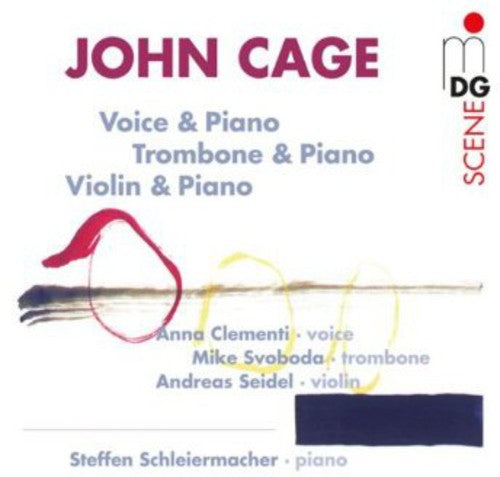




 {# optional: put hover video/second image here positioned absolute; inset:0 #}
{# optional: put hover video/second image here positioned absolute; inset:0 #}


 {# optional: put hover video/second image here positioned absolute; inset:0 #}
{# optional: put hover video/second image here positioned absolute; inset:0 #}


 {# optional: put hover video/second image here positioned absolute; inset:0 #}
{# optional: put hover video/second image here positioned absolute; inset:0 #}


 {# optional: put hover video/second image here positioned absolute; inset:0 #}
{# optional: put hover video/second image here positioned absolute; inset:0 #}


 {# optional: put hover video/second image here positioned absolute; inset:0 #}
{# optional: put hover video/second image here positioned absolute; inset:0 #}


 {# optional: put hover video/second image here positioned absolute; inset:0 #}
{# optional: put hover video/second image here positioned absolute; inset:0 #}


 {# optional: put hover video/second image here positioned absolute; inset:0 #}
{# optional: put hover video/second image here positioned absolute; inset:0 #}


 {# optional: put hover video/second image here positioned absolute; inset:0 #}
{# optional: put hover video/second image here positioned absolute; inset:0 #}


 {# optional: put hover video/second image here positioned absolute; inset:0 #}
{# optional: put hover video/second image here positioned absolute; inset:0 #}


 {# optional: put hover video/second image here positioned absolute; inset:0 #}
{# optional: put hover video/second image here positioned absolute; inset:0 #}


 {# optional: put hover video/second image here positioned absolute; inset:0 #}
{# optional: put hover video/second image here positioned absolute; inset:0 #}


 {# optional: put hover video/second image here positioned absolute; inset:0 #}
{# optional: put hover video/second image here positioned absolute; inset:0 #}
 {# optional: put hover video/second image here positioned absolute; inset:0 #}
{# optional: put hover video/second image here positioned absolute; inset:0 #}
 {# optional: put hover video/second image here positioned absolute; inset:0 #}
{# optional: put hover video/second image here positioned absolute; inset:0 #}